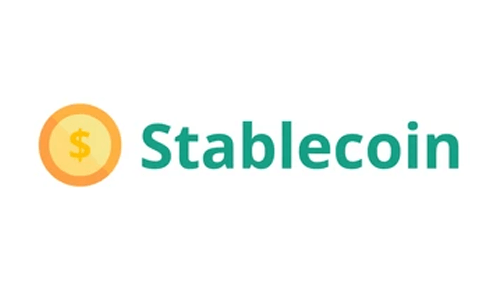You’ve probably heard the term “stablecoins” circulating around the crypto-sphere recently. The popularized form of crypto has been making a splash as people worldwide are trying to get their hands on it. So, what makes this group of coins so enticing and why are they so popular? Keep reading and we’ll give you the full scoop on stablecoins.
What are Stablecoins?
Stablecoins can be a complex concept. In a nutshell, they’re a type of cryptocurrency that ties itself to another asset, such as a fiat currency or a commodity like gold. They attempt to tie themselves to other assets to ensure they live up to their name and remain “stable.” On top of that, they want to make sure there’s a fixed transaction rate between crypto on exchange sites. Most stablecoins aim to have a specific stabilized ratio to their tied asset. For example, Tether has a 1:1 tie with the US dollar (USD).
Just like with most cryptos, stablecoins try to have a purpose similar to traditional money and assets. However, unlike fiat currencies, they are minted on the blockchain. Since these coins are slightly different from conventional cryptos and fiat currencies, like Bitcoin and USD, they tend to be in their own category. Think of them as somewhere in between cryptos and fiats. A few good examples of stablecoins include Tether (USDT), Dai, and Tether Gold (XAUT). Before we go any further, let’s break down the different types of stablecoins.
Types of Stablecoins
Fiat-backed or fiat-collateralized:
Fiat-backed or fiat-collateralized stablecoins tie themselves to a fiat currency. As their name suggests, they are “backed” or “collateralized” by more centralized currencies such as the USD or the Euro.
A popular example of a fiat-backed stablecoin is Tether (USDT). Tether ties itself to the US dollar, meaning that while it can make some fluctuations, it’s primarily dependent on the dollar’s movement.
Commodity-backed:
Commodity-backed stablecoins are tied to physical assets such as gold, oil, or even real estate. People tend to use commodity-backed stablecoins to help them invest in assets that may not be accessible to them.
Let’s take gold for example. There are areas in the world that can’t access gold bars, and more importantly, finding a secure location to hold your precious metal can be just as hard. Because of this, investors will typically buy a specific stablecoin such as XAUT or Paxos Gold (PAXG).
It’s important to remember that certain stablecoins, such as gold-backed coins, are accessible and redeemable. However, some commodity-backed stablecoins don’t have the same redeemable quality. An example of a less redeemable commodity-backed stablecoin is Petro. The Venezuelan stablecoin can’t be redeemed for a barrel of oil but that doesn’t mean it’s not as important as other stablecoins.
Crypto-backed:
The third type of stablecoin is crypto-backed. However, it’s important to note that this type of stablecoin is different from a fiat-backed coin. This is because these stablecoins usually don’t have a 1:1 ratio with their backed asset. Since the pegged asset is volatile, crypto-backed stablecoins will over collateralize. An example is if a $5 crypto-backed stablecoin is pegged to a crypto asset of $10. The crypto asset is double the amount of the stable coin to allow for any losses of crypto-assets due to its volatility.
An interesting part of crypto-backed stablecoins is they have a high level of decentralization compared to other forms of stablecoins. On top of that, they have a higher liquidity rate than fiat-backed stablecoins. However, the system behind these coins can also be more complex.
Algorithmic stablecoins or non-collateralized stablecoin:
Algorithmic stablecoins are not backed by fiat or crypto. Instead, they’re supported by specialized algorithms, rules, or smart contracts. These algorithms may handle the circulation of a fiat currency and then the stablecoin depends on the circulation system. From there, the system controls the number of the specified tokens in circulation. The system wants to avoid exceeding or undervaluing the market price of circulating tokens.
For example, an algorithmic stablecoin system may lower the number of stablecoins in circulation if the price of the stablecoin falls lower than the fiat currency it is tracking.
Here’s another example. Say one algorithmic stablecoin is tied to 3 USD. If the stablecoin increases to 4 USD, the algorithm or system will release more stablecoins in circulation to ensure the price stabilizes back to 3 USD.
Some might describe algorithmic stablecoins and the system it uses as supply manipulation. There even appears to be some controversy as some sources say there hasn’t been a successful version of this coin. However, there’s still hope, since experts say that it can change systems if used correctly.
Now that we’ve discussed the variations, let’s get into some of the top stablecoins.
The 5 Best Stablecoins on the Market
- Tether (USDT)
Tether, which was once known as “RealCoin,” is pegged to the US dollar. It’s considered one of the most popular stablecoins. There are “spinoff” Tether stablecoins as well, such as EURT (which is pegged to the Euro) and CNHT (which is pegged to China’s Yuan).
The advantages of buying Tether include its high liquidity rate, stability, and protection against volatility
- TrueUSD (TUSD)
TrueUSD is another stablecoin pegged to the US dollar. It was created in 2018 by TrustToken. While it’s similar to Tether, it has not reached the same amount of popularity.
TrustToken believes in autonomy and stresses the importance of independent verification. TUSD is great for large investors and even private traders who want to reduce risky trading.
- USD Coin (USDC)
USDC is also pegged to the US dollar. Similar to USDT and TUSD, it’s built on the Ethereum blockchain. However, unlike TUSD, USDC focuses on their coin becoming a usable currency. The Centre Consortium, the founders behind USDC, aim to make their coins widely available to exchanges, wallets, and traders alike. The Centre Consortium promises that one USDC will always equal one USD.
- Dai
Dai is an Ethereum-based stablecoin that launched in November 2019. It’s pegged to the US dollar and other cryptocurrencies. Dai was made by a sum of decentralized applications (also known as dapps) which makes it easier for the stablecoin to be less volatile, and it allows for investing in other dapps.
- Pax Dollar (USDP)
USDP was founded in September 2018 and was previously known as Paxos Standard. This stablecoin uses the Ethereum blockchain and is backed by a 1:1 ratio with USD. However, unlike other fiat-backed stablecoins, the USD that supports USDP must be held in Paxos-owned bank accounts located in the US.
Paxos, the company behind USDP, creates and issues its coins using a smart contract.
Exploring Stablecoins and Beyond
There are so many benefits to using stablecoins and with so many stablecoins out there, it can be overwhelming. That’s why it’s essential to do your research about the ones you’re interested in. So, what’s your favorite stablecoin from our list?



